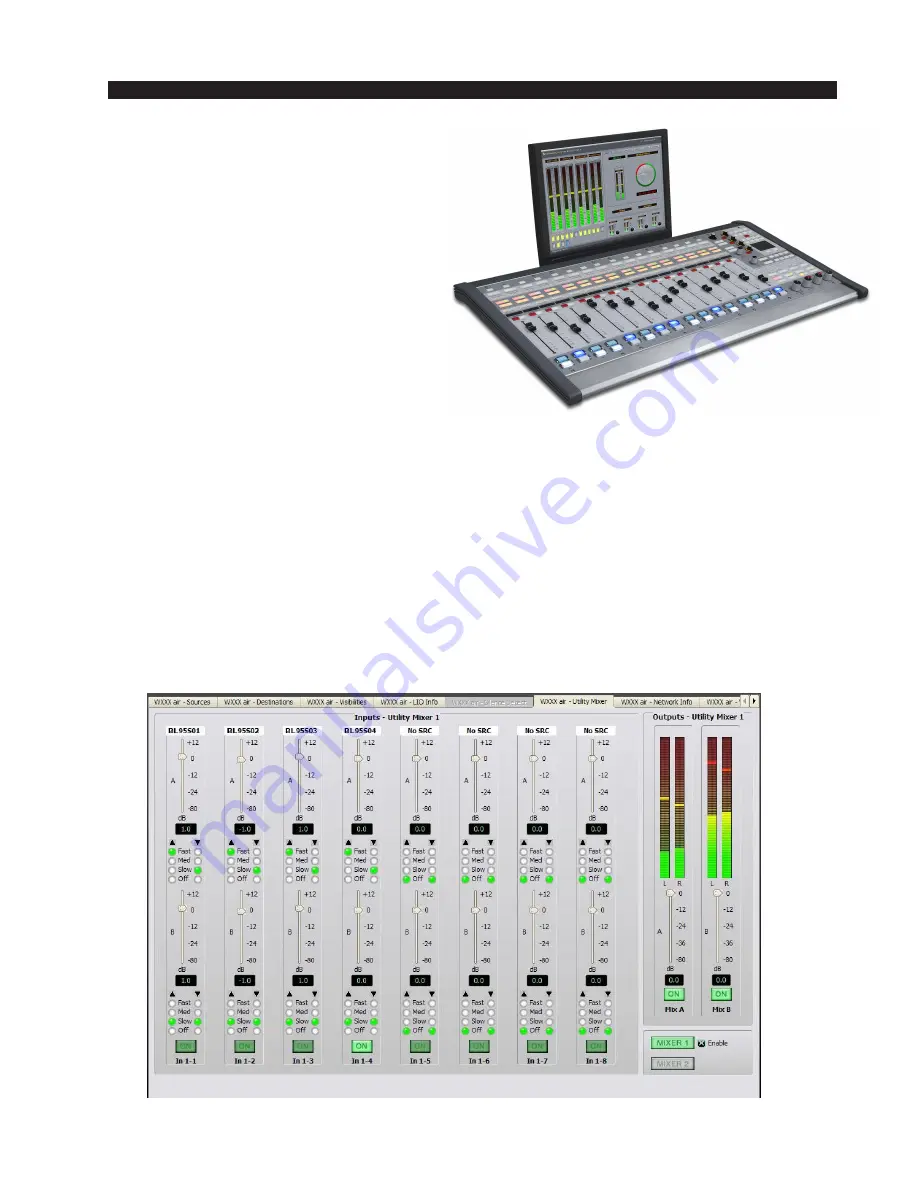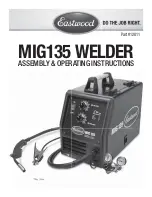
W H E A T N E T - I P S Y S T E M O P E R A T I O N A L M O D E S
page 2 – 19
WheatNet-IP
/ Apr 2009
Audio connections can be mixed, or
combined together. That’s obviously what
a control surface is for. You assign various
sources to the fader channels (in the
WheatNet-IP system, console fader chan-
nels appear as destinations just like physi-
cal outputs do) and combine them into
different buses and/or outputs, which can
then be sent on to other destinations (again,
in the WheatNet-IP system, all of the mix
buses and console outputs appear as
sources, just like physical inputs do). This
is a huge advantage in system design,
because you don’t need to buy physical
inputs or outputs for your consoles, nor do
you need to buy distribution amps to get the same signal to multiple places. You need only
one connection for each physical input or output device (say a microphone or speaker) and
the WheatNet-IP network takes care of the rest.
But control surfaces aren’t the only ways you can combine signals in the WheatNet-IP
system. After all, a control surface can be a fairly expensive proposition if all you need to
do is mix a few channels together. So each rackmount BLADE includes two built Utility
Mixers. Each mixer can select up to eight WheatNet-IP network sources, and provides two
stereo buses which become available throughout the WheatNet-IP
network. Each mixer
channel has a separate fader for each bus output in the same mixer. The mixers are
configured with the Navigator GUI, with the mixer inputs showing up in the crosspoint grid
as destinations and the mixer bus outputs showing up as sources. And, for simple summing,
such as combining the left and right channels of a stereo source into a mono destination, the
WheatNet-IP system does that too.
WheatNet-IP
/ June 2010
















































